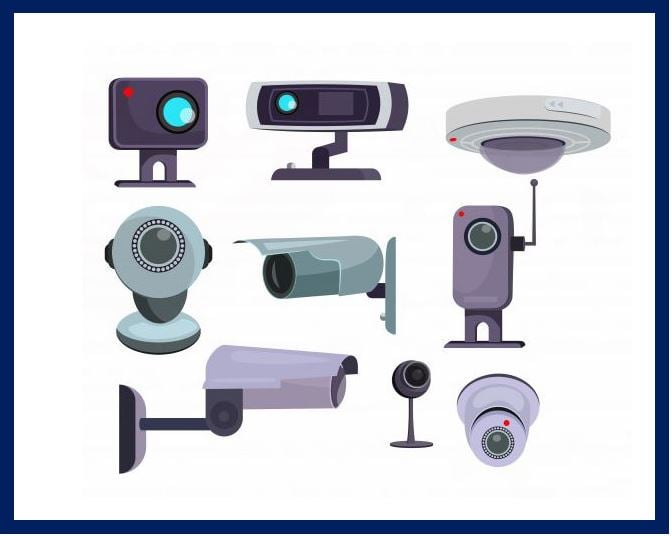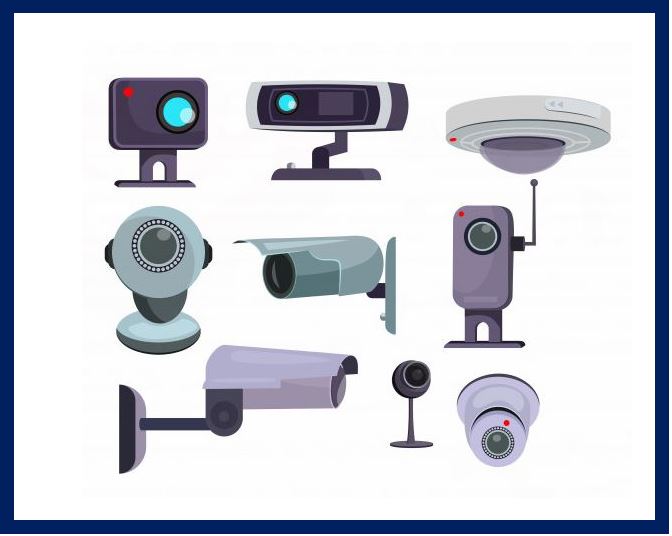
In an age where home security is of paramount importance, investing in a reliable surveillance system is a proactive step towards safeguarding your property and loved ones. Among the plethora of security cameras available today, light socket security cameras stand out as versatile and inconspicuous solutions. In this comprehensive guide, we will explore the essential factors to consider when choosing the best light socket security camera for your specific needs. From camera resolution to smart home integration, we will delve into each aspect to help you make an informed decision and enhance the security of your home.
-
Camera Resolution and Image Quality
The foundation of any effective security camera lies in its image quality. When evaluating light socket security cameras, pay close attention to their resolution, typically measured in megapixels (MP). Higher resolution cameras offer clearer and more detailed images, allowing for better identification of people and objects in surveillance footage. Opt for cameras with at least 1080p resolution for optimal results, and consider higher resolutions, such as 2K or 4K, for enhanced clarity.
In addition to resolution, consider the camera’s image sensor size and the presence of technologies like High Dynamic Range (HDR) and Wide Dynamic Range (WDR). These features help the camera handle varying lighting conditions and improve image quality in challenging environments.
-
Night Vision Capabilities
Security concerns do not diminish when the sun sets. That’s where night vision capabilities become crucial. Look for light socket security cameras equipped with advanced infrared (IR) LEDs that provide clear night vision even in complete darkness. Some cameras offer color night vision, providing a more detailed and vibrant view of the surroundings during low-light conditions. Night vision ensures continuous monitoring, allowing you to remain vigilant round the clock.
Consider the camera’s night vision range as well. Cameras with longer night vision ranges are better suited for large outdoor areas, while those with shorter ranges are ideal for indoor monitoring.
-
Field of view and coverage area
The field of view (FOV) determines the area a security camera can cover. Wider FOVs are ideal for monitoring larger spaces, such as living rooms or backyards, while narrower FOVs are suitable for focusing on specific entry points. Assess your surveillance needs and consider cameras with adjustable FOVs or pan-tilt-zoom (PTZ) functionality for flexible coverage.
Another factor to consider is the camera’s focal length. A smaller focal length results in a wider FOV, while a larger focal length provides a narrower FOV with more zoom capability. Strike a balance between the two based on your specific requirements.
-
Two way audio communication
Two-way audio communication is a valuable feature that enables real-time interaction with individuals within the camera’s vicinity. This feature can facilitate communication with family members, guests, or even intruders, depending on the situation. Choose a light socket security camera with built-in speakers and microphones for seamless two-way audio communication, enhancing the capabilities of your surveillance system.
Two-way audio can serve various purposes, from greeting visitors at the door to warning potential intruders that they are being monitored. It can also be used for remote communication with family members or pets while you are away from home.
-
Motion detection and alerts
Motion detection technology is essential for minimizing storage usage and alerting you to potential security threats. Opt for cameras with advanced motion detection algorithms that can differentiate between human movement and other objects, reducing false alarms. Customizable alert settings allow you to receive notifications on your mobile device when motion is detected, enabling prompt responses to suspicious activities.
Look for cameras that offer adjustable motion detection sensitivity, as this allows you to fine-tune the level of sensitivity based on the camera’s placement and the environment it is monitoring.
-
Connectivity options
Light socket security cameras typically offer two main connectivity options: Wi-Fi and wired. Wi-Fi cameras are more convenient to install and can be placed anywhere within the range of your home network. On the other hand, wired cameras offer a more stable and reliable connection, ensuring uninterrupted surveillance.
Consider the layout of your property and the availability of power sources when choosing the most suitable connectivity option for your needs. If you opt for Wi-Fi cameras, ensure that your home’s Wi-Fi network provides sufficient coverage and signal strength in the camera’s intended location.
-
Smart home integration
The integration of light socket security cameras with smart home systems adds a layer of convenience and automation to your security setup. Look for cameras that are compatible with popular smart home platforms like Amazon Alexa, Google Assistant, or Apple HomeKit. This allows you to control and monitor your camera using voice commands or through a centralized smart home app.
Additionally, explore the possibility of creating automation routines that trigger other smart devices, such as turning on lights when motion is detected. Integrating your security camera into a smart home ecosystem enhances its functionality and provides you with more control over your home’s security.
-
Installation and Placement Considerations
The ease of installation is a crucial factor, especially for those who are not tech-savvy. Light socket security camera are generally easy to set up, but it’s essential to follow the manufacturer’s instructions for a smooth installation process. Consider cameras with magnetic mounts or adjustable brackets for flexible placement.
Ensure the camera’s positioning maximizes its field of view and minimizes potential obstructions for effective surveillance. For outdoor cameras, verify that they are weatherproof and designed to withstand various environmental conditions.
-
Privacy and Data Security
As with any connected device, privacy and data security are paramount concerns. Choose reputable brands that prioritize privacy and employ robust encryption methods to safeguard your data. Familiarize yourself with the camera’s privacy settings and features like geo-fencing, which allows you to define specific zones where the camera should not record or send alerts.
Regularly update the camera’s firmware to protect against potential vulnerabilities. Additionally, consider cameras that offer local storage options or support encrypted cloud storage for added data security. Local storage, such as an SD card slot, allows you to retain control over your recorded footage and reduce the risk of potential data breaches. On the other hand, encrypted cloud storage ensures that your data is securely stored off-site, providing redundancy and protection against physical damage or theft of the camera.
When setting up your camera, create strong and unique passwords for both the camera and any associated accounts. Avoid using default passwords as they are often easy for hackers to guess. Enable two-factor authentication whenever possible to add an extra layer of security to your camera and account access.
-
Brand Reputation and Customer Support
The reputation of the camera’s manufacturer is an essential factor to consider when investing in a light socket security camera. Research the brand’s history, customer reviews, and ratings to gauge their product quality and reliability. A reputable brand is more likely to offer better customer support, regular software updates, and extended warranties, providing peace of mind and better long-term value.
Customer support is vital, especially when you encounter technical issues or have questions about your camera’s features. Look for manufacturers that provide responsive customer service through multiple channels such as phone, email, and live chat.
Conclusion
Choosing the best light socket security camera involves careful consideration of various factors to ensure that it meets your specific security needs and preferences. From camera resolution and night vision capabilities to smart home integration and privacy features, each aspect contributes to the overall effectiveness of your surveillance system.
By understanding your unique requirements and assessing the camera’s features accordingly, you can select a light socket security camera that provides enhanced protection, peace of mind, and seamless integration into your home environment. Remember to prioritize image quality, night vision capabilities, two-way audio, motion detection, and secure connectivity options. Additionally, smart home integration and privacy considerations can further enhance the functionality and security of your camera.
Take the time to research reputable brands, read customer reviews, and explore the customer support provided by manufacturers. A well-informed decision will ensure that your investment in a light socket security camera proves valuable in safeguarding your property and loved ones.
Remember that a comprehensive surveillance system may involve multiple cameras placed strategically around your property. Consider the overall layout of your home and assess the areas that require monitoring to determine the number of cameras needed and their specific features.
With the right light socket security camera, you can rest assured that your home is well-protected, allowing you to focus on what truly matters – the safety and security of your family and belongings.
You may be interested in: Top Tips For Choosing The Right CCTV Security Camera









